Skydiving Motion and Altitude Sickness: Tips to Stay Comfortable
General
Posted by: Laura Morris
5 months ago
You’ve booked your skydive, and the excitement is real! But maybe there are some little nagging questions in the back of your mind: Do people get motion sick while skydiving? Can you get altitude sickness while skydiving? Rest assured, these are common concerns – and we’re here to help you prepare for a smooth, comfortable jump. We will also share a few tips to prevent both altitude and motion sickness when skydiving.
What is Altitude Sickness?
Ever wondered what happens to your body as you climb higher and higher? As elevation increases, oxygen levels decrease – big time! In fact, at 14,000 feet, there’s a whopping 43% less oxygen than at sea level. This sudden drop in oxygen can affect both your body and brain, and if you ascend too quickly, it can lead to altitude sickness.
What does altitude sickness feel like? Symptoms of altitude sickness aren’t exactly fun – think headaches, nausea, dizziness, lack of coordination, just to name a few. Thankfully, altitude sickness is preventable by ascending gradually, allowing your body time to adjust.
But what about skydiving? Skydivers spend only a brief time at elevation, so altitude sickness isn’t typically a concern. Instead, skydivers occasionally talk about hypoxia – but even that is incredibly rare.
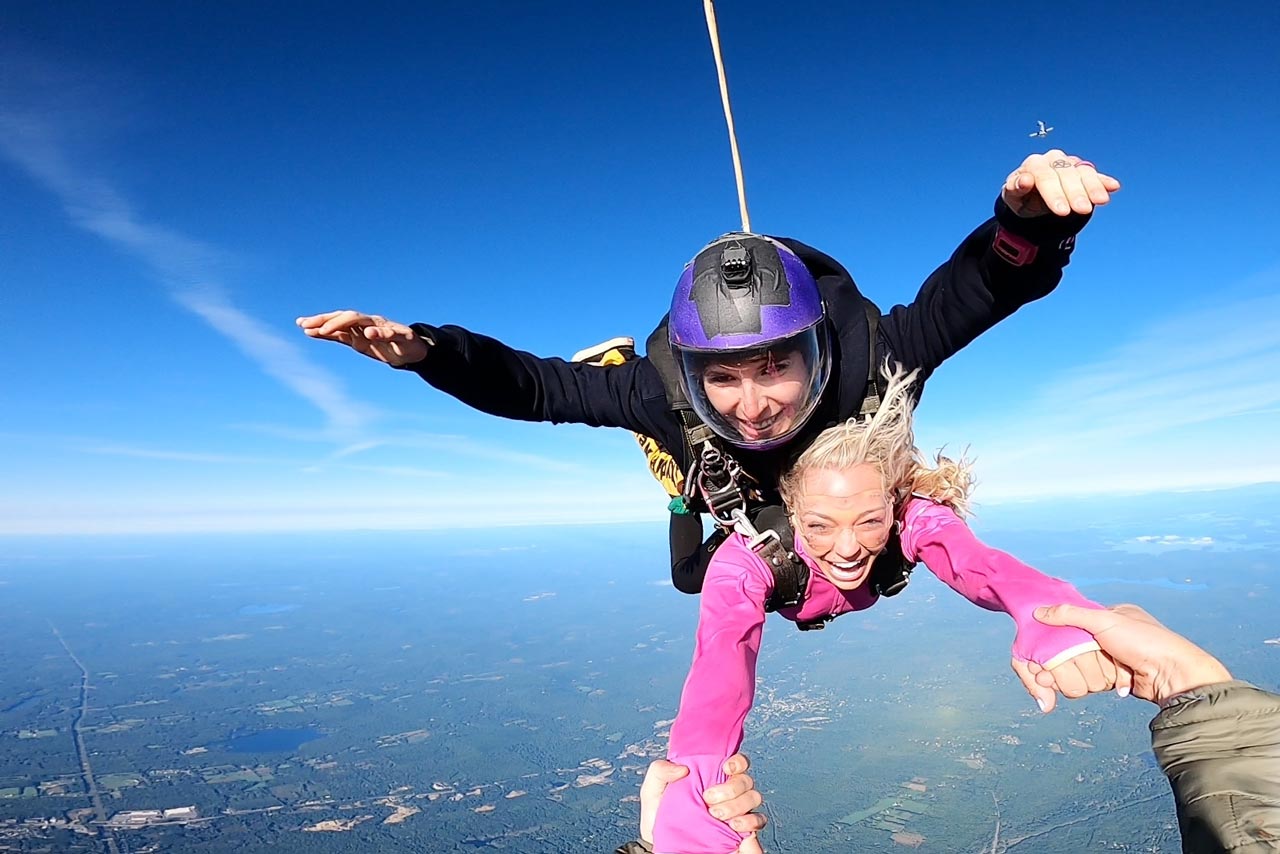
What is Hypoxia?
Hypoxia happens when your body doesn’t get enough oxygen to function properly. While altitude sickness is caused by the body’s struggle to adjust to reduced oxygen levels over time, hypoxia is due to a more immediate lack of oxygen reaching your brain and tissues.
In skydiving, hypoxia could occur at extremely high altitudes if you’re there for too long without supplemental oxygen. Symptoms are similar to altitude sickness – and could consist of headaches, confusion, dizziness, or even trouble breathing.
At regulated dropzones, hypoxia is unlikely. The Federal Aviation Administration (FAA) mandates supplemental oxygen above 14,000 feet. During our High-Altitude Low Opening (HALO) Tandems, which exit at 18,000 feet, we use supplemental oxygen to keep you comfortable while you experience the thrill of skydiving at extreme altitudes.
Do People Get Motion Sick Skydiving?
Contrary to popular belief, skydiving doesn’t deliver that stomach drop feeling you’d get on a roller coaster. However, if motion sickness is experienced while skydiving it is most likely to happen during the canopy descent.
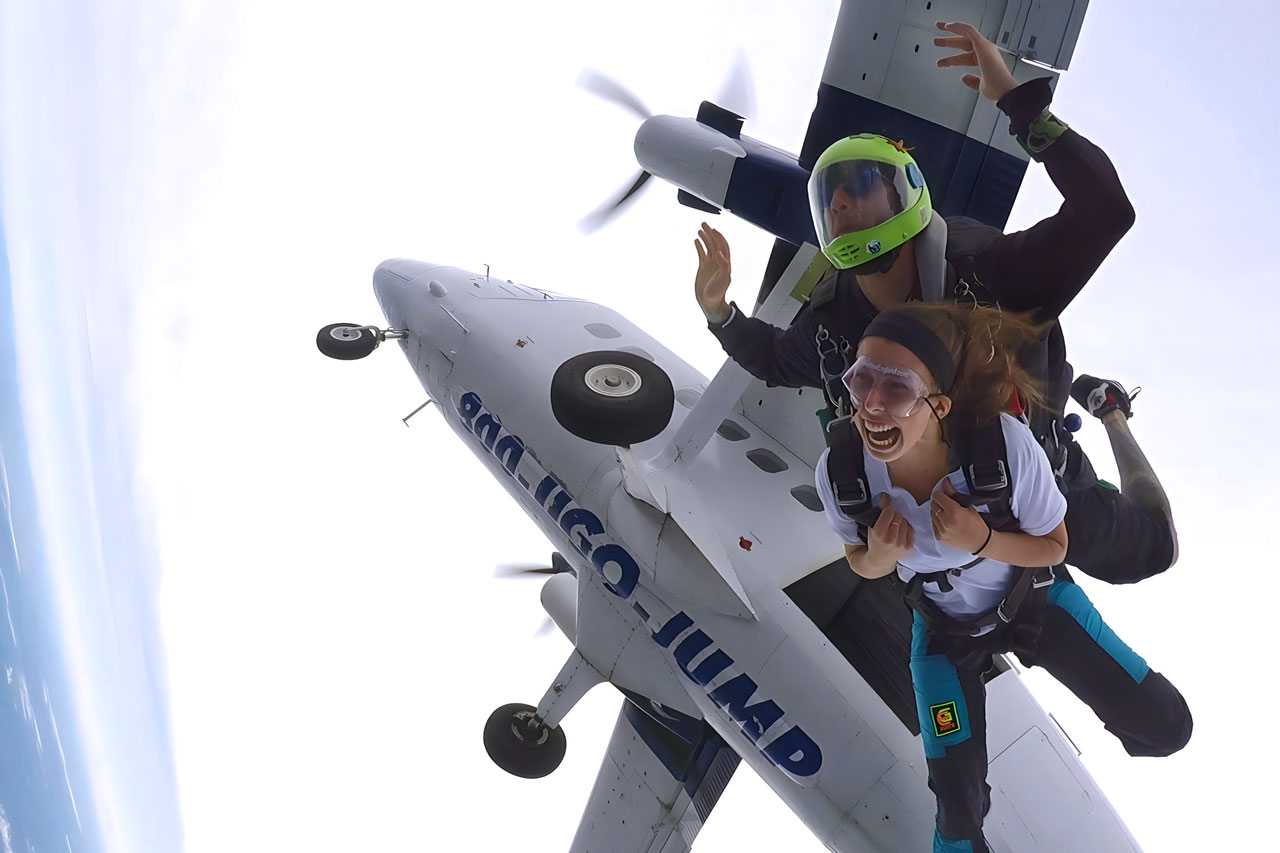
Here’s why motion sickness happens:
- Inner Ear Confusion: Your body may struggle to process the unfamiliar movements and rapid altitude changes. This can make the inner ear feel out of balance.
- Visual Mismatch: Motion sickness can arise when there is a disconnect between what the eyes see and what the inner ear senses. So, in the case of skydiving, a person looking at the ground rushing up or focusing on the horizon while experiencing the motion of a parachute might struggle to reconcile these inputs.
- Canopy Maneuvers: Under the canopy, aka parachute, many skydivers perform sharp turns or spirals to adjust their landing approach or for fun. Spirals and sharp turns under the parachute can amplify nausea, especially for first-timers.
- Adrenaline and Stress: The adrenaline rush from the freefall and the jump can heighten sensitivity to motion.
Tips to Prevent Altitude Sickness & Motion Sickness While Skydiving
To maximize comfort and enjoyment, follow these tips:
- Look at the Horizon: Keeping your eyes on a stable reference point can help reduce disorientation rather than looking straight down at the ground.
- Minimize Spirals: If you are prone to motion sickness or start to feel a type of way under the parachute, let your instructor know! They can make the ride gentler.
- Controlled Breathing: Deep, steady breaths can calm nerves and reduce nausea.
- Eat Light: Avoid meals that are too heavy or greasy before the jump, but don’t skydive on an empty stomach, as both can worsen nausea. You want healthy food in your stomach to sustain that adrenaline rush!
- Hydrate: Dehydration can make you more susceptible to motion sickness. So, drink lots of water. But remember, no alcohol! Not only is it prohibited before, but it’s also likely to make you feel worse.
- Listen to Your Instructor: Pay close attention to your instructor’s directions. For high-altitude jumps, this includes a special high-altitude briefing in addition to your standard training.
By taking these steps, you can help reduce or prevent motion sickness during a canopy descent and ensure a more enjoyable skydive!
Let’s Skydive!
Skydiving is an adventure like no other, and with the right preparation, you can ensure it’s an enjoyable and comfortable experience from start to finish. Whether you’re worried about altitude sickness or motion sickness, following these simple tips can help you focus on the thrill of the jump. Remember, your instructors are there to guide you every step of the way – don’t hesitate to communicate your concerns. So, gear up, take a deep breath, and get ready to create memories that will last a lifetime! Haven’t booked yet? What are you waiting for!? Schedule your jump today!
Categories:
You May Be Interested In:
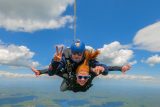
How Much Does Skydiving Cost? Pricing Breakdown & What to Expect
3 weeks ago by Curtis White
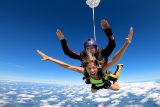
The Skydiving Adrenaline Rush: A Thrill Like No Other!
2 months ago by Curtis White

What Is Static Line Skydiving? Your Guide to Static Line Jumps
3 months ago by Laura Morris

How to Get into Wingsuiting: Your Guide to Wingsuit Flying
3 months ago by Curtis White
Enter to Win a Free Skydive
Join our email list and enter to win a free tandem skydive. Drawings in April and December; winner announced on social media.
You’ll get a $10 coupon toward a tandem just for signing up! Must be 18 and under 240 lbs to jump.
*By submitting this form, you are consenting to receive marketing emails from Skydive New England, 40 Skydive Lane, Lebanon, Maine 04027. You can revoke your consent by using the SafeUnsubscribe link located at the bottom of every email. Emails are serviced by Constant Contact.
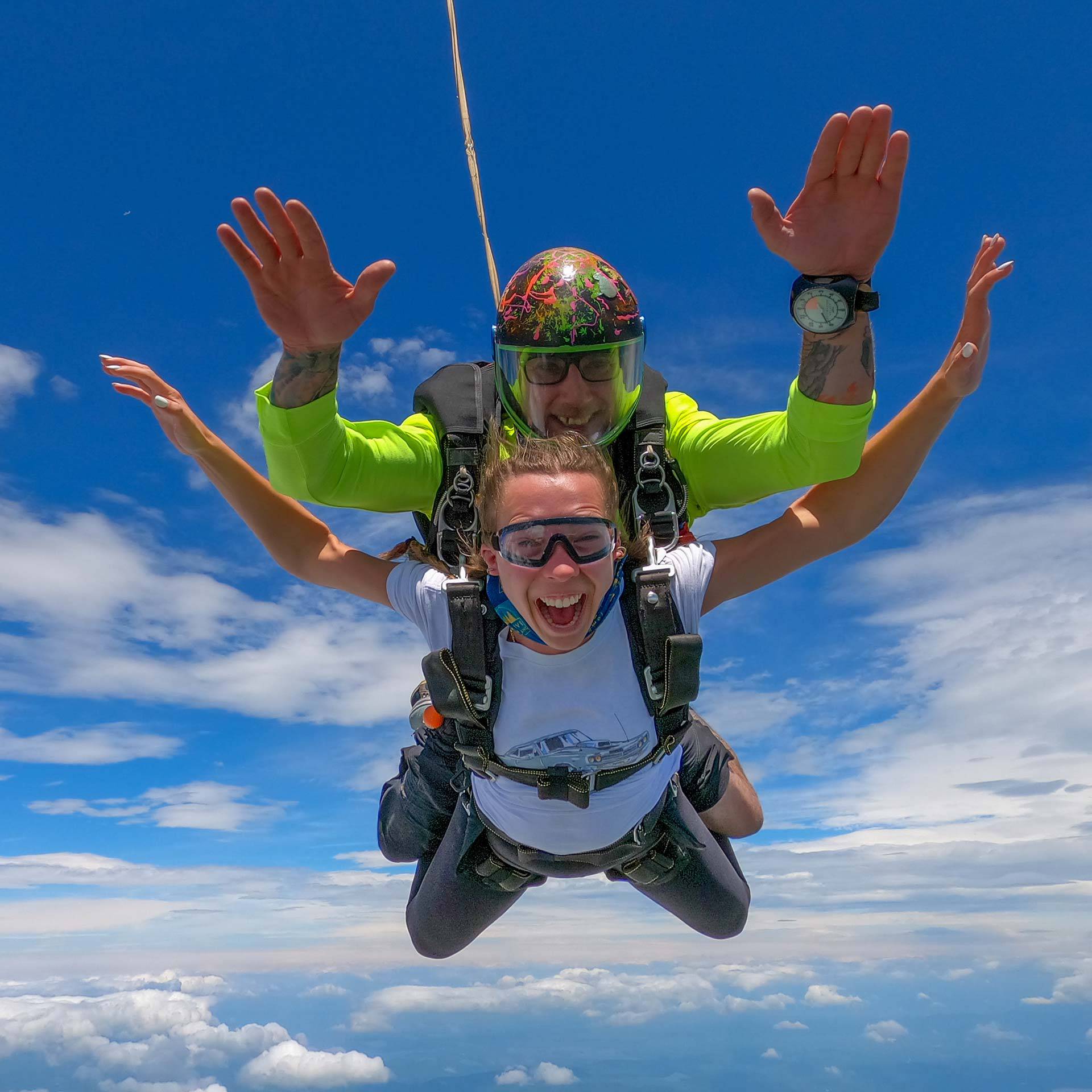
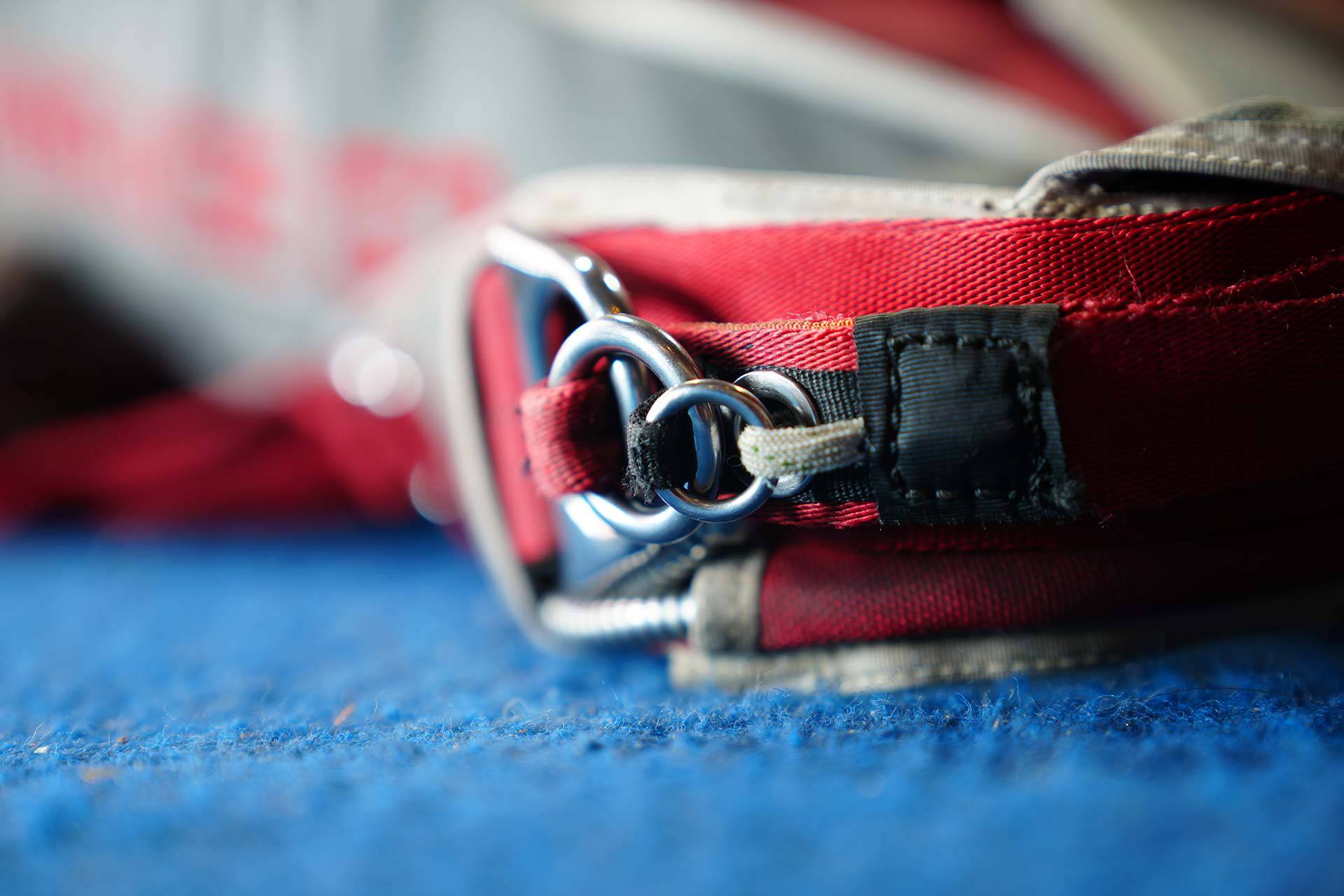
Even More Wicked-Fun Than It Looks!
Come see why the biggest DZ in New England is also the best.
